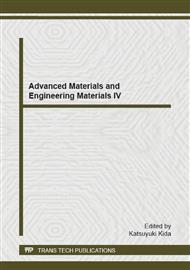p.279
p.284
p.288
p.293
p.297
p.302
p.309
p.315
p.319
Experimental Investigation on Surface Tension of Water-Based Graphene Oxide Nanofluids
Abstract:
The water-based graphene oxide nanofluids were prepared. The surface tension of nanofluids with different mass fraction, temperature and different nanoparticle size was researched. The surface tension value was measured through ringmethod. The experimental results show that the surface tension of nanofluids is increased with increasing the mass faction of nanoparticles. But the surface tension of nanofluids with maximum concentration (0.1 wt %) is only increased up to 2.9% compared with deionized water. The surface tension of nanofluids decreases with increasing temperature and decreasing nanoparticle size. The results of this paper may provide reference for the research of absorption liquid for absorption refrigeration cycle.
Info:
Periodical:
Pages:
297-301
Citation:
Online since:
December 2014
Authors:
Keywords:
Price:
Сopyright:
© 2015 Trans Tech Publications Ltd. All Rights Reserved
Share:
Citation:



